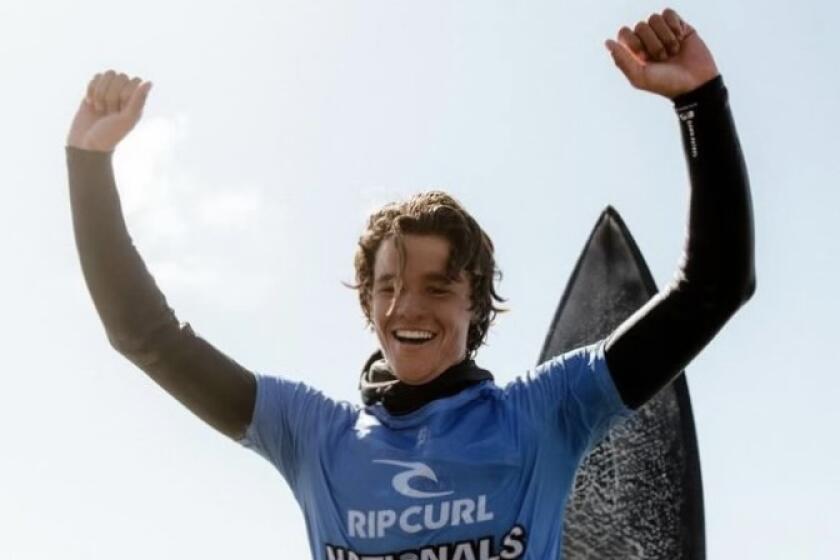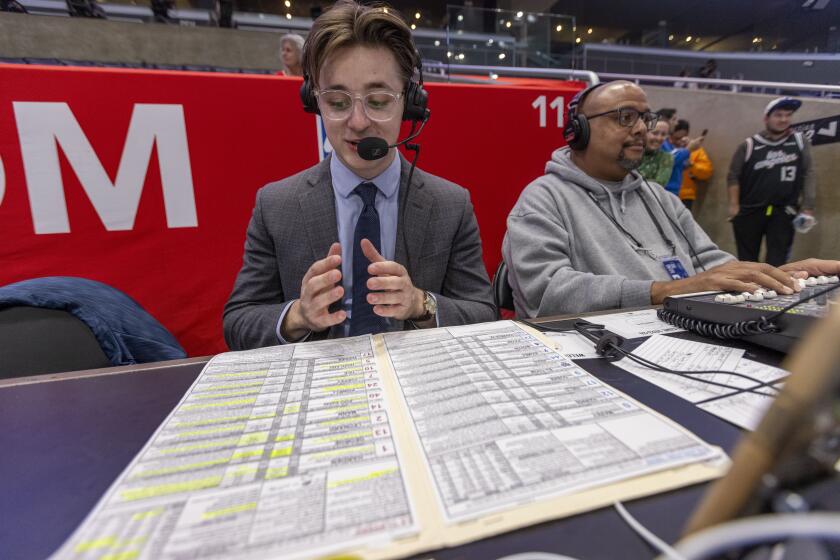Roster rehab leads to Packers’ turnaround
GREEN BAY, Wis. -- Sure, Brett Favre saw the Packers’ turnaround coming.
The chance to lead one of the league’s most potent offenses to a division title and return to the playoffs -- that’s why No. 4 decided back in February that he shouldn’t retire.
And if you believe that, you also might be interested in a great deal on a winter time share in a lush, tropical getaway called Green Bay.
“Did I think, ‘OK, I’m going back, there’s a very, very good possibility that we go to the Super Bowl and win it’? I mean, I’d be lying to you if I said that,” Favre said. “But I did not think we’d come back and be 4-12, 8-8. I really thought we would be better, and that was exciting.”
Two years ago, the Packers finished 4-12 and were among the worst teams in the league. Despite improving to 8-8 last year under new Coach Mike McCarthy, Favre was grumbling about the team’s inactivity in free agency as recently as May.
Now the Packers will take an 11-2 record into today’s game in St. Louis, with the NFC North title already in hand. They can talk about the Super Bowl without anybody snickering, and appear to be a team built to last.
Favre is shocked, and most of his teammates are too young to realize the magnitude of the team’s turnaround. But McCarthy insists it isn’t a surprise.
“I’d be a very poor salesman if I had to sell a product that I didn’t believe in,” McCarthy said. “I believed in it from Day 1. There’s a process to building a program. I think we’ve accomplished that, to some level. We’re positioning our football team to be a good football team year in and year out. That’s what it takes to line up and try to win world championships. We haven’t done that yet. We are on path to do that.”
Linebacker Robert Thomas, who played for the Packers during the dismal 2005 season that cost coach Mike Sherman his job, returned to Lambeau Field with Oakland last Sunday and barely recognized his old team in a 38-7 Packers victory.
“There isn’t a single position where they aren’t significantly better,” Thomas said. “We knew they were good, but that’s the best team we’ve faced this season. I know we’ve lost a lot of games, but no team has taken it to us like that.”
So what happened?
General Manager Ted Thompson took a conservative approach to replenishing the depleted roster left from Sherman’s disappointing stint as general manager, building through the draft and granting contract extensions to cornerstone veterans such as wide receiver Donald Driver, cornerback Al Harris, defensive end Aaron Kampman and linebacker Nick Barnett.
McCarthy blended young players and veterans to produce a winner, beginning with a four-game streak to end last season. Players committed to off-season workouts, and the team came away relatively healthy from a training camp that emphasized rest and recovery without becoming a country club.
The Packers squeaked by Philadelphia in their season opener, but the offense soon became a scoring machine as Favre picked apart teams with short, quick passes that led to yards after the catch.
The rebuilt defense and special teams pulled their weight, too.
“It’s a good blend right now, and it’s happened pretty quickly, obviously,” Favre said. “But I would have never thought as I stand here today that we would be not only in position to possibly win 14 games, but to break all these records. But the bottom line is what happens in the end.”
McCarthy gets much of the credit for reining in Favre, who threw a career-worst 29 interceptions in 2005. But Favre says it helps that he isn’t playing from behind all the time, a credit to the defense.
The Packers are led by one of the best cornerback tandems in the league in Harris and Charles Woodson, have a playmaking middle linebacker in Barnett and a dominant defensive end in Kampman. Green Bay has given up 17.6 points per game, second in the NFL behind Pittsburgh.
Beyond that, Favre is learning to trust receivers other than Driver.
Young wideouts Greg Jennings and James Jones embody the draft philosophy of Thompson, who doesn’t shy away from taking players who weren’t big names in college or didn’t put up big numbers at the scouting combine.
Thompson took Jennings out of Western Michigan in the second round last year, overlooking his mid-major background and underwhelming size and speed to recognize a receiver who just knows how to get open. Jennings leads the Packers with 11 touchdowns.
This year, Thompson spent a third-round pick on Jones, another receiver from a non-BCS school, San Jose State. Jones didn’t wow scouts with his speed or size, but he catches nearly everything thrown his way and is the Packers’ No. 3 receiver.
Thompson managed to find an even more obscure solution at running back, where the Packers let veteran Ahman Green leave through free agency. McCarthy tried three players before settling on Ryan Grant, a relatively unknown player obtained in a trade with the New York Giants just before the season. Grant took over as the starter last month and has rushed for 100 yards or more in three of the last five games.
More to Read
Get our high school sports newsletter
Prep Rally is devoted to the SoCal high school sports experience, bringing you scores, stories and a behind-the-scenes look at what makes prep sports so popular.
You may occasionally receive promotional content from the Los Angeles Times.






